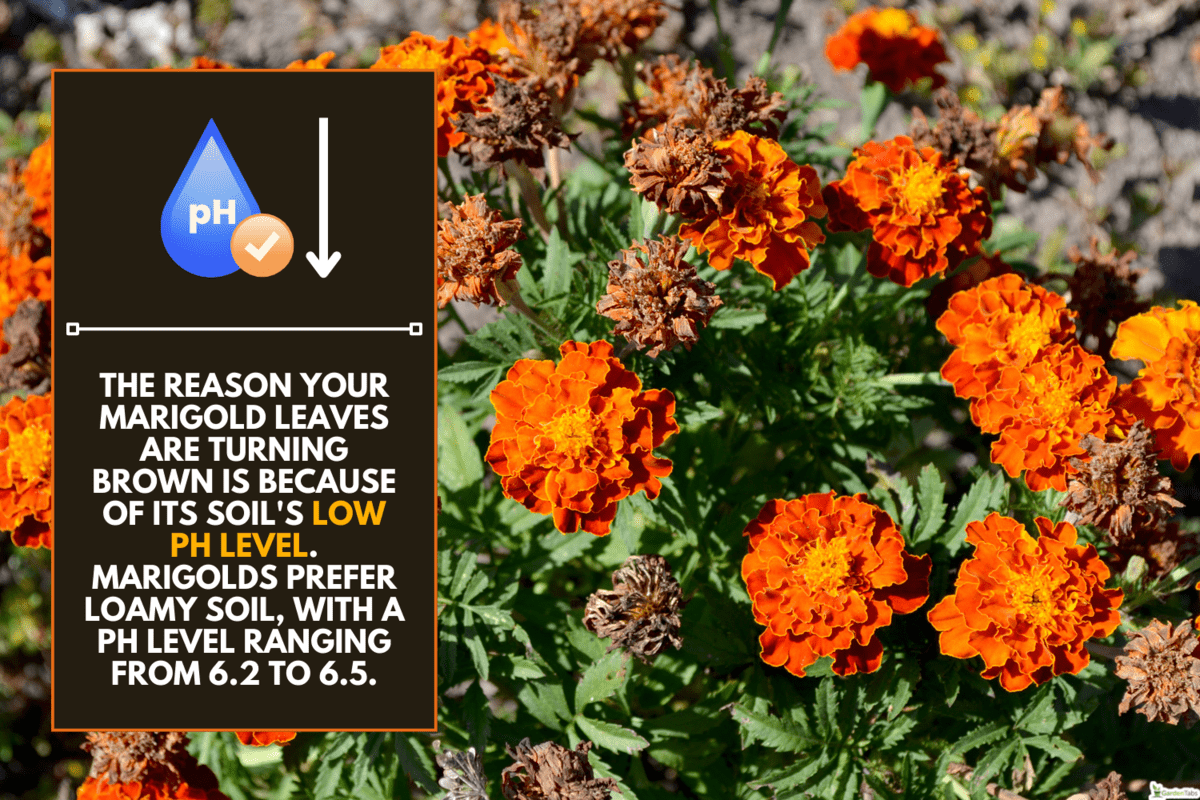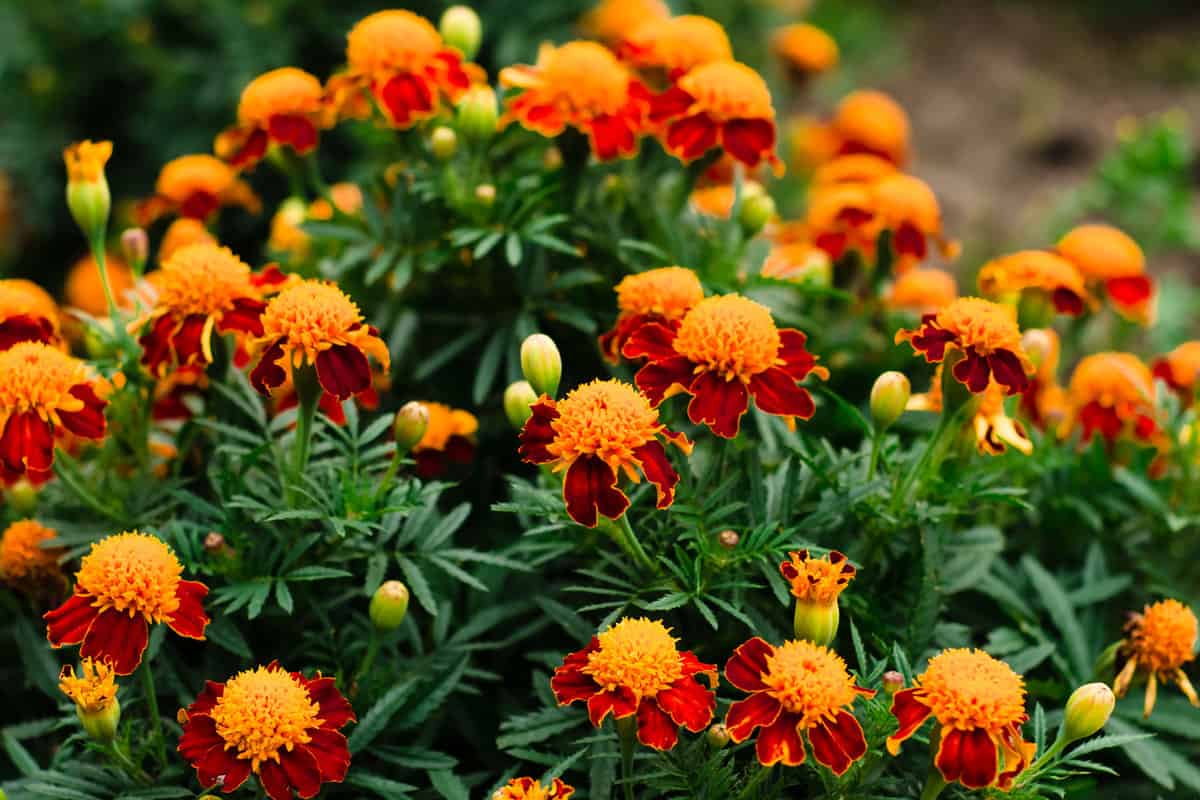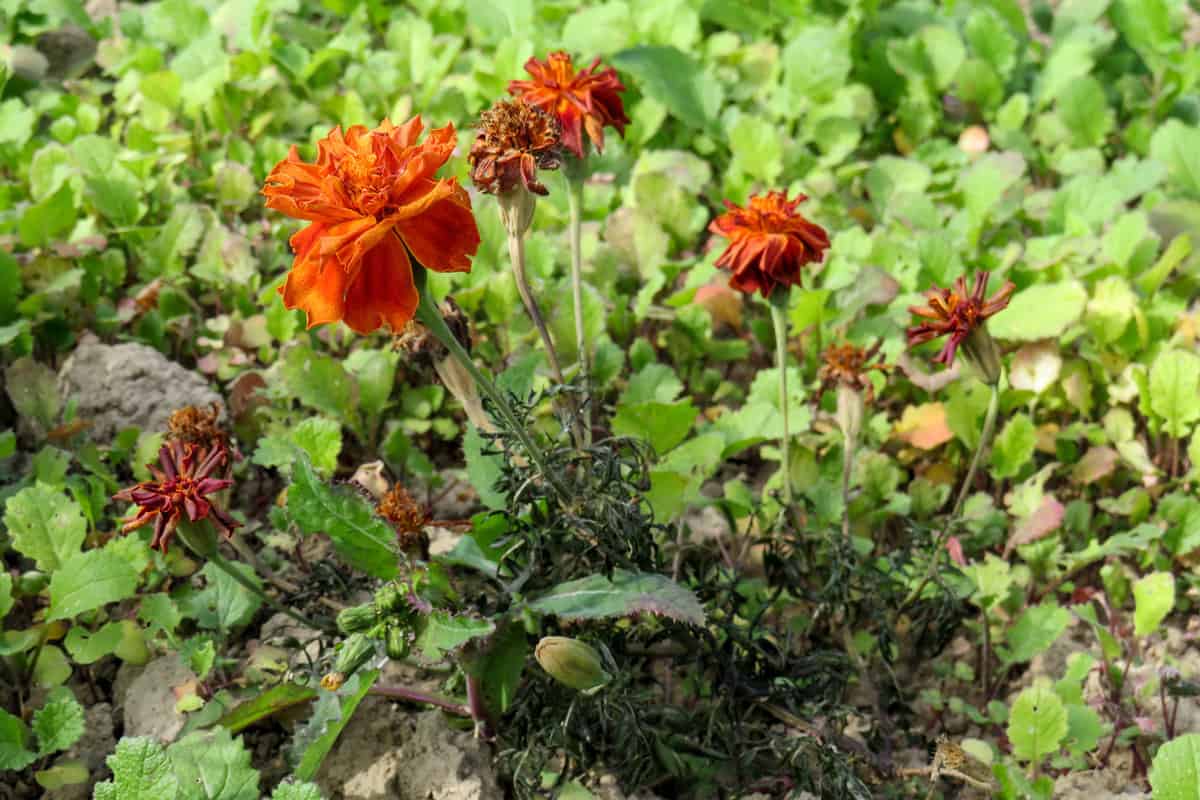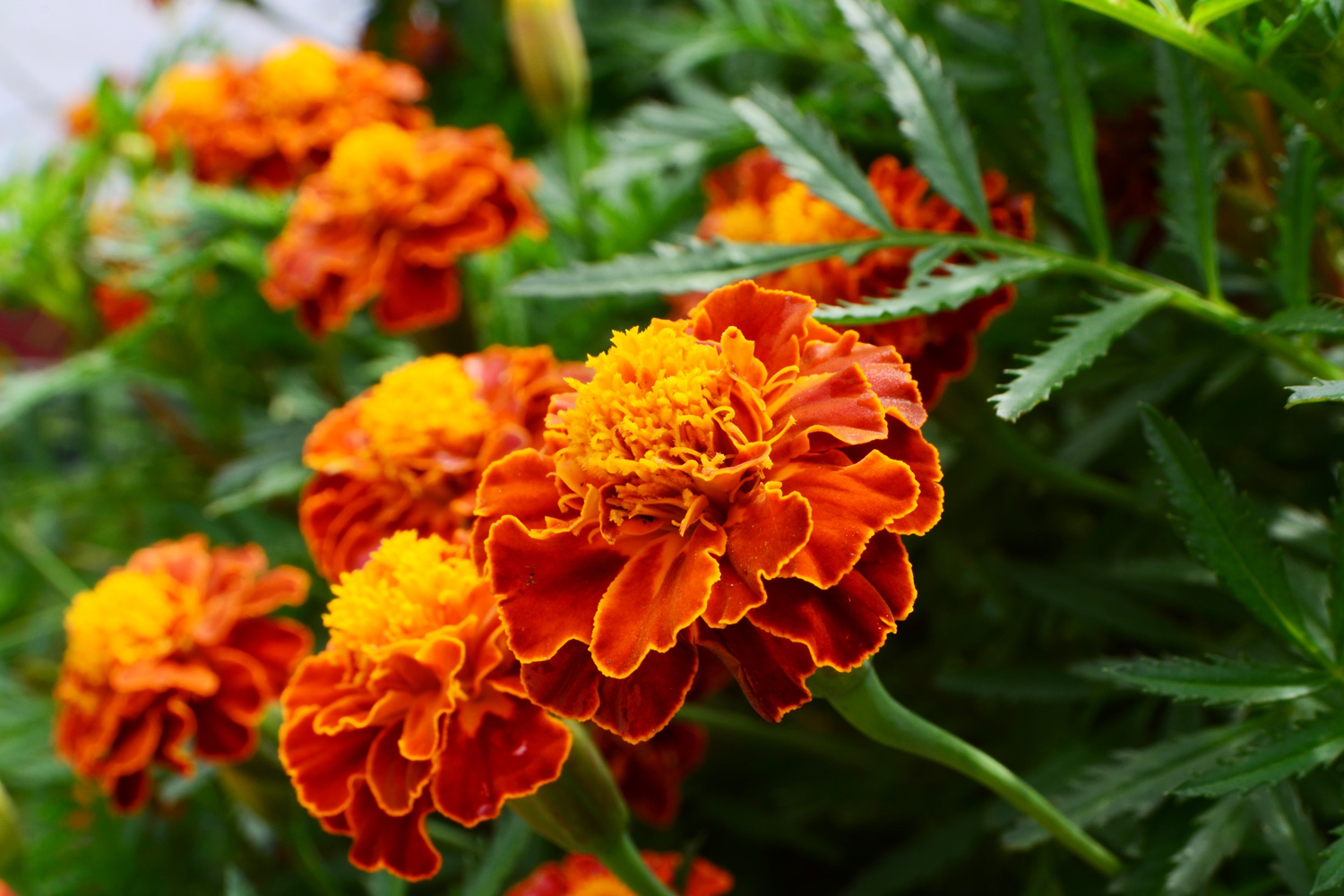Marigolds not only add vibrance to a space but also control pests, so it's no surprise that you've chosen to plant them in your garden. However, you may have found it frustrating that your marigold leaves have started turning brown and are unsure what to do. So, we have researched why this happens and what you should do to fix this issue.
Your Marigold leaves may turn brown if the soil's pH level is too low. Marigolds prefer loamy soil, with a pH level ranging from 6.2 to 6.5. If the pH level goes below 5.5, the leaves will start developing speckles that indicate iron or manganese toxicity until it turns completely brown.
Marigolds are easier to maintain than other flowers, but that doesn't mean you could ignore them for a long time. You should check the soil during your garden maintenance routine to see if your marigold leaves and flowers are thriving. Keep reading below to learn more about caring for these beautiful flowers.

Why Are Your Marigold Leaves Turning Brown?
Marigolds turn brown because of various factors. One is the soil's pH level, and the other is the amount of watering the plant receives.
Marigolds do not tolerate overly-acidic soil well since it makes the leaves vulnerable to iron or manganese poisoning.
At the same time, Marigolds need well-draining soil to thrive. If you overwater your Marigolds and the soil is not well-draining enough, the roots will become too saturated. It can lead to root rotting, making the leaves turn brown until they fall off.
This is why it's important to allow the soil to drain the water first before watering it again since the plants can also grow bacteria due to waterlogging.
What Soil Do Marigolds Prefer?

Loam is typically the best soil for gardens and more so for Marigolds. Loam soil has the best particles since it allows for better aeration and balances drainage and moisture retention.
If you live in an area that experiences a lot of rain showers, you may need to amend the soil first (which is easy to do with loam soil) since it tends to form clusters when watered too much.
You can amend the soil with organic material and compost if it is too acidic. Applying agricultural lime is one of the most effective ways to raise the soil's pH level.
Conversely, if the pH level is too high--or alkaline--you should apply iron and ammonium sulfates and organic matter.
How To Know Soil's pH Level
It's important to check your soil's pH level periodically to know when it's time to amend it. This will prevent the hassle of trying to save your plants just when they're about to expire, and it will make your garden thrive better, especially if you're aware of your plants' soil requirements.
A pH meter or a soil test kit is the best way to know the soil's pH level. There are many available ones in the market that you can purchase so you can check the soil yourself.
A temporary method is to observe the color or dye of the soil. The color tends to change depending on the soil's pH level, letting you make a safe estimate.
Check out this soil pH tester on Amazon.
What Marigold Diseases Should You Look Out For?

Now that you're aware of what may cause your Marigold leaves to turn brown, you should also familiarize yourself with the other diseases that can harm your Marigold blooms.
Maintenance is key to determining whether the Marigold leaves are still healthy or already have diseases; and whether there's still a chance to salvage them.
Here are potential diseases that Marigolds can have if not cared for.
Boron Problems
Boron is a highly essential micronutrient that all plants--including Marigolds--need. It is responsible for making the plants form big and vibrant blooms since it transports sugars needed for cell development.
If there is not enough Boron in the soil, new Marigold leaves will look wilted and yellow.
Conversely, if the Boron is highly concentrated, the roots of your Marigolds can rot and die. You can solve this through deep-watering, where Boron can be distributed back into the earth.
Molybdenum Deficiency
The amount of Molybdenum in plants is important for the Marigolds to thrive. If this micronutrient is deficient, the enzymes responsible for plant growth will not be present.
Molybdenum is responsible for carrying out nitrogenase and nitrate reductase, which are essential to making your leaves healthy and vibrant. Without this trace element, your Marigolds won't be able to live--let alone form flowers.
One of the most convenient ways to introduce Molybdenum into the soil is by adding a fertilizer with this nutrient. You can also add lime to lower the soil's pH level, thus introducing more trace amounts of Molybdenum.
Manganese Toxicity
Manganese toxicity is one of the culprits to your Marigold leaves turning brown. High concentrations of manganese in plants have been linked to low levels of Calcium and Magnesium in the leaves.
Before it's too late, you can amend the soil by introducing other micronutrients and fertilizers. Make sure to increase the pH level of the soil as well since this can decrease the amount of Manganese in the soil.
You will be able to observe the changes when new leaves grow. The leaves should be a vibrant green and no longer brown and speckled.
Bacterial Leaf Spot

Bacterial leaf spots are one of the most deadly diseases among ornamental plants. They are especially bad for Marigolds. The timing of the treatment is extremely crucial to saving the plant. Otherwise, you will need to remove the plant entirely before it affects others.
The signs of bacterial leaf spots can be spotted early on if you observe the foliage. You will notice the edges of the leaves turning black and the surface of the leaves having brown spots.
The leaves will also have a papery texture, which means that the foliage is turning brittle. If caught early, applying copper fungicide can still prove to be effective. However, if it is too late, the only thing you can do is prevent the disease from spreading.
How To Grow Marigolds
Taking care of Marigolds is considered to be easier compared to other flowering plants. The key is to ensure they are planted in an ideal environment and maintained effectively.
Marigolds can thrive well in USDA zones 2-11. They are best planted during the summer season since they can bloom longer. However, note that Marigolds don't live long in zones 8 and below since they could rarely survive the winter.
Make sure that the soil is well-drained but moist, especially during the dry season. Watering it at least once a week should be enough. Plant them in a location that gets full sunlight to encourage full blooms.
If the flowers start to fade, cut them off so the plant can grow fuller and fresher blooms. Some varieties may require a stake, especially those placed in locations that experience unpredictable weather patterns.
Read: When To Plant Marigolds? [Inc. Seeds And Seedlings]
Which Marigold Variety is Best?

There are many varieties of Marigolds, but the most commonly known are French marigolds, Signet Marigolds and African Marigolds.
The "best" type of Marigold depends on your preference for flowers and whether your surrounding environment can support such a variety.
However, most gardeners prefer growing French marigolds since they tend to be the hardiest. You can grow them inside or outside the garden, and they are relatively easier to grow compared to other varieties.
Signet, or single, Marigolds are edible, so people often add them as a herb spice or salad addition. However, they only have a single layer of bloom, so they are best grown for their culinary benefits than for aesthetics.
On the other hand, African Marigolds have the largest blooms among all the plant varieties. They have a stronger scent and can be used as a natural medicine for hiccups.
If French Marigolds hold up well in wet weather, African Marigolds tolerate dry seasons. However, a downside of this vibrant and hardy variety is that it has a shorter bloom season than French Marigolds.
Read: Which Marigolds Are Not Edible/Toxic? [Comprehensive Guide]
Final Thoughts
Marigolds have one of the most gorgeous blooms among flowering plants, making them valuable to our indoor or outdoor garden. Unfortunately, they can be prone to diseases.
Make sure to maintain the soil in which your Marigold is planted to avoid issues so you can enjoy your blooms for a longer time.

